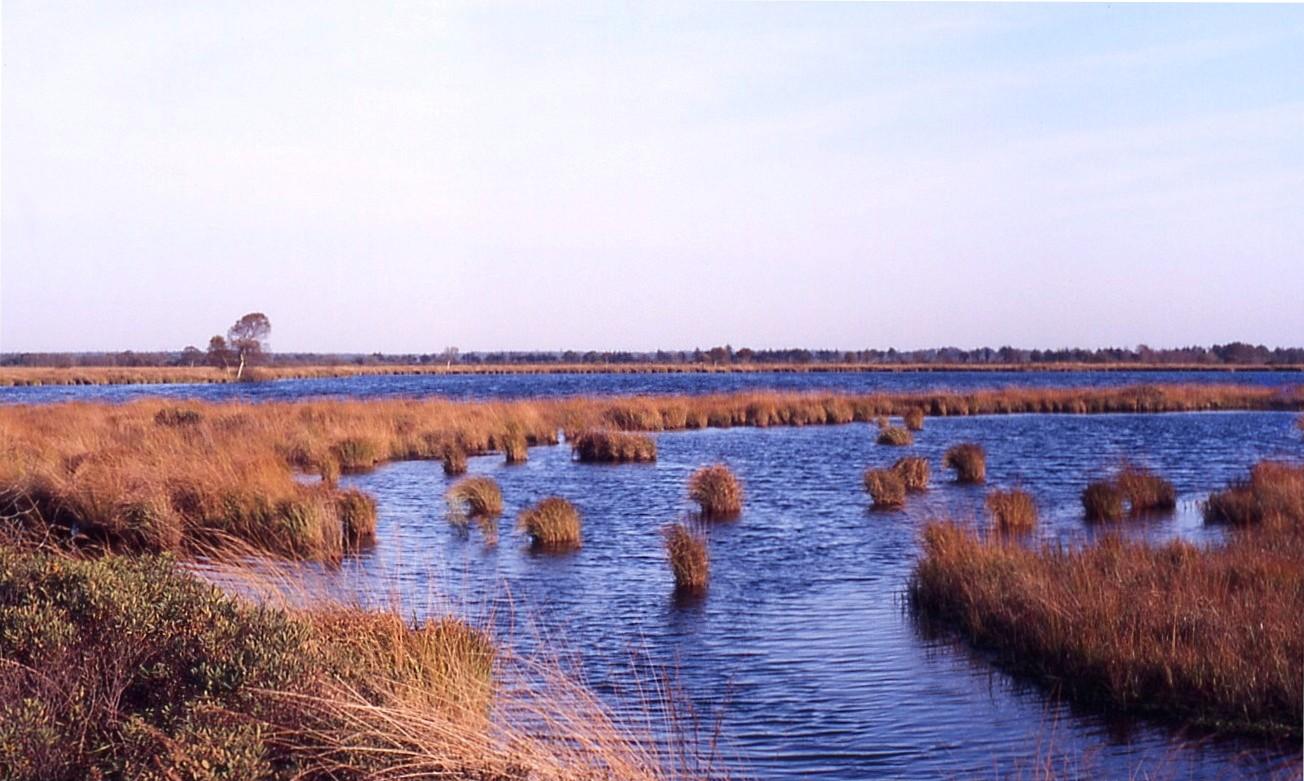Bog Pond on:
[Wikipedia]
[Google]
[Amazon]
 A bog pond () is a waterbody in the middle of a raised or kettle bog, formerly also in percolating
A bog pond () is a waterbody in the middle of a raised or kettle bog, formerly also in percolating
 A bog pond () is a waterbody in the middle of a raised or kettle bog, formerly also in percolating
A bog pond () is a waterbody in the middle of a raised or kettle bog, formerly also in percolating mire
A peatland is a type of wetland whose soils consist of Soil organic matter, organic matter from decaying plants, forming layers of peat. Peatlands arise because of incomplete decomposition of organic matter, usually litter from vegetation, du ...
s (''Durchströmungsmooren''). It is also called a bog pool, bog eye, raised bog kolk, bog kolk or just kolk.
Bog ponds owe their existence to the growth of the bog body and are thus of biogenic origin.
Brown bog ponds are surrounded by peat and receive their water exclusively from precipitation or from the large rain storage capacity of raised bogs. Such kolks generally represent the non-evaporating excess water of a bog. The central waterbody of these bogs exhibit almost no sedimentation
Sedimentation is the deposition of sediments. It takes place when particles in suspension settle out of the fluid in which they are entrained and come to rest against a barrier. This is due to their motion through the fluid in response to th ...
.
The accumulation of nutrients can lead to the formation of floating mats. Their vegetation differs from that of other structures in the bog. Usually the edges of the kolk are more nutrient-rich as a result of mineralisation processes caused by wave and wind action. Here woody plants, such as downy birch
''Betula pubescens'' (syn. ''Betula alba''), commonly known as downy birch and also as moor birch, white birch, European white birch or hairy birch, is a species of deciduous tree, native and abundant throughout northern Europe and northern Asia ...
(''Betula pubescens''), and other species of plant, e.g. purple moor grass (''Molinia caerulea''), may establish, that otherwise are missing on the central areas of intact bogs. The bog water is brown, nutrient-poor, humic acid
Humic substances (HS) are colored relatively recalcitrant organic compounds naturally formed during long-term decomposition and transformation of biomass residues. The color of humic substances varies from bright yellow to light or dark brown lead ...
rich, and lime-free ( dystrophic).
Literature
* Fritz Overbeck: ''Botanisch-geologische Moorkunde. Unter besonderer Berücksichtigung der Moore Nordwestdeutschlands als Quellen zur Vegetations-, Klima- und Siedlungsgeschichte.'' Wachholtz, Neumunster, 1975, . * Michael Succow, Lebrecht Jeschke: ''Moore in der Landschaft. Entstehung, Haushalt, Lebewelt, Verbreitung, Nutzung und Erhaltung der Moore.'' 2nd edn., Deutsch, Thun etc., 1990, {{ISBN, 3-87144-954-7. Bogs Hydrogeology